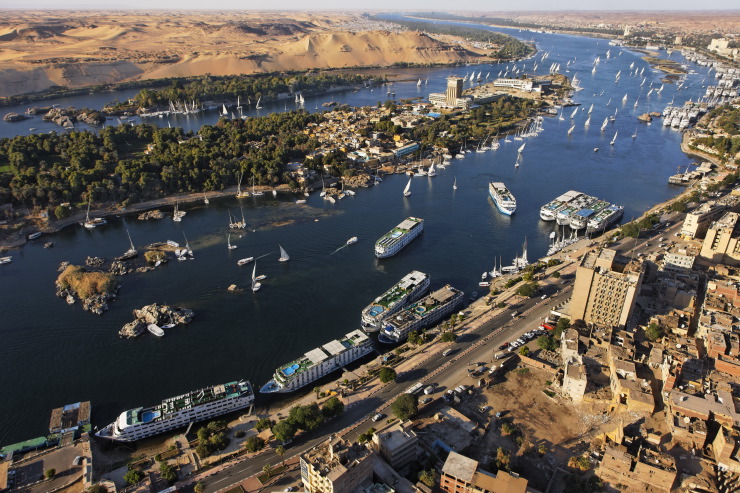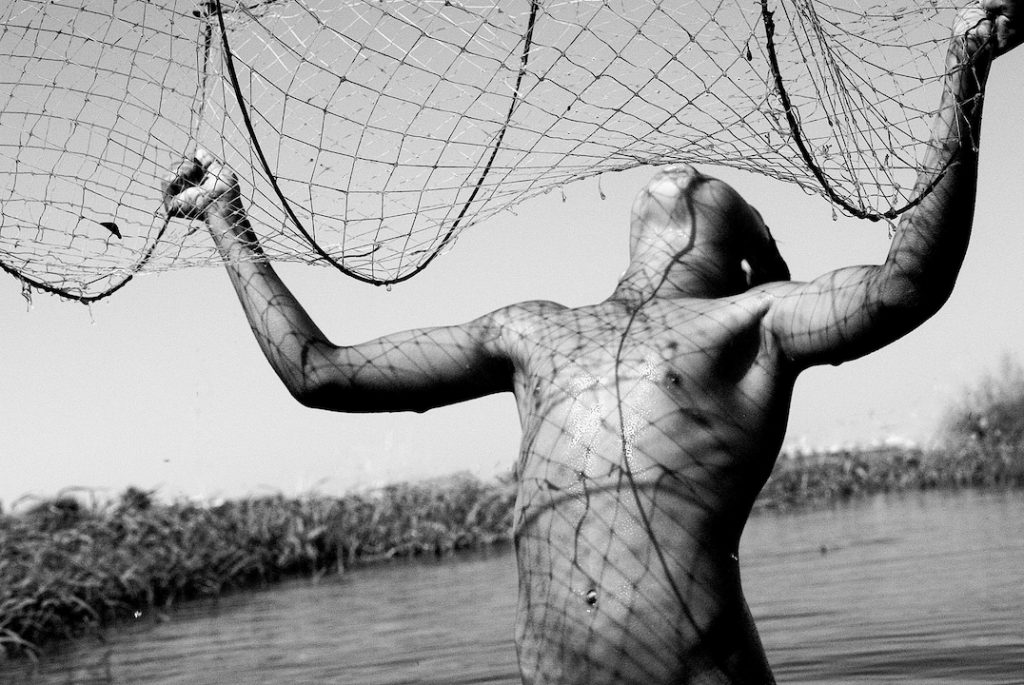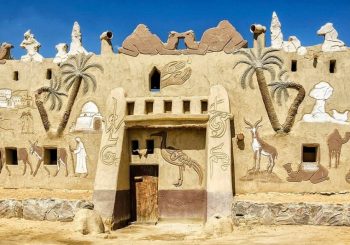In February 2018, Egyptian singer Sherine Abdel Wahab was sentenced to six months in jail after a fan asked her to perform her popular song “Haven’t You Ever Drunk from the Nile?” (Mashrebtesh Men Nilha), to which she responded, “No, you’d get Schistosomiasis. Drink Evian instead.” This flippant comment was ruled a serious offense to the river to such an extent that Egyptian officials determined it warranted an arrest.
Schistosomiasis, a water-borne disease, has a very long history in Egypt, infecting a high percentage of the ancient Egyptian population up to 5,000 years ago. More recently, the Egyptian cultural icon, Abd al-Halim Hafiz, died from the disease in 1977.
Although Egypt has combatted Schistosomiasis for decades, the Nile parasite continues to afflict the nation-state. Shortly after the Egyptian government called for Sherine’s arrest, the performer profusely apologized and insisted her comment was nothing more than a “silly joke.” However, in a country where the Nile serves as the primary source of drinking water and irrigation, was Sherine’s comment not simply an honest raising of awareness in the Egyptian public’s best interest? Furthermore, did Sherine, as a popular public figure whose lyrics encourage drinking from the Nile, do a disservice to people who may take those lyrics literally by relegating her comment to a joke?

Samir Sabry, a lawyer infamous for his extensive filings of public interest lawsuits, issued the initial claim against Sherine, accusing her of insulting Egypt and tarnishing its national image during her concert in the United Arab Emirates. According to Sabry, “Egyptian art is in its worst state ever at the moment” and must be saved by individuals like himself.
Sherine’s arrest, however, had nothing to do with the alleged degradation of Egyptian art but rather a comment she made in reference to her own art. In the words of Hany Shaker, the Chairman of the Egyptian Syndicate of Musical Professions, who also banned Sherine from singing and performing in Egypt for two months due to her remark, Egyptians needed to be “dedicated to supporting [Egypt] culturally and artistically” in order to “achieve the great aspirations of these great people.” Sherine’s comment defied this top-down mandate and, accordingly, constituted nothing less, in his opinion, than an act against Egypt.
Responses to Sherine’s arrest in Egypt were factious, with multiple Egyptian media outlets reacting with either objective or negative headlines. One news source, for example, titled a video explaining the incident: “Sad thing, Sherine insults the Nile you drank from.” This caption pits the viewers against Sherine and inspires resentment towards the entertainer for “insulting” the Egyptian public’s primary source of drinking water. By comparison, comments on YouTube videos describing the incident as well as on articles detailing it are almost overwhelmingly supportive of Sherine. One such remark plainly states, “this joke was actually FOR the public interest if you think about it.” Why, then, did some local actors find Sherine’s statement to be unpatriotic and anti-Egypt? To answer this question, it is necessary to consider how the Nile has come to be an entity intimately connected with Egypt and why the river is such a major symbol of life, nationalism, and community.

The Nile as a Symbol: From Ancient Egypt to Modern Music
The Nile has long been a vital element of Egypt, beginning around five million years ago when the river started to run northwards into Egypt. By 3150 BCE, the Egyptian civilization on the banks of the Nile became the world’s first recognizable nation state. In depicting the significance of the Nile to the ancient Egyptians, a prominent story in Egyptian mythology illustrates the god Osiris, whose brother Set murdered him out of jealousy and discarded 36 pieces of his dismembered body all over Egypt. Though Osiris’ wife, Isis, embarked on a journey to find each body part, erecting a shrine in every location where a piece was found, she never found Osiris’ phallus, which Set threw into the Nile. The Nile was made fertile by this deposit, and accordingly, signified life to ancient Egyptians.
Today, the Nile has maintained extreme significance: the 11 East African countries that exist, at least partially, within the Nile Basin, depend on the river as a resource for drinking water, irrigation, and agriculture, which makes sharing of the waterway a constant point of contention. In the pursuit of peacebuilding, however, some actors turn to music as a messenger for change. For example, the Nile Project, a group comprised of musicians from the 11 countries within the Nile Basin, fosters a positive relationship among the countries of East Africa through songs such as “Dingy Dingy,” which resonates with the current crisis of water scarcity in the Nile Basin, stating that the head and the legs of the Nile would be “doomed if they leave each other.” The group aims to incorporate elements from numerous Nile cultures to create music that embodies a “uniquely Nile sound.” Sherine, clearly, is not the only artist to harness the Nile as a symbol of community in music, if albeit on a more localized scale.

Sherine’s “Haven’t You Ever Drunk from the Nile” champions a spirit of fellowship similar to the Nile Project’s “Dingy Dingy,” but within more nationalistic parameters. The title of the song references an Egyptian proverb, which states “if you drink from the Nile, you are destined to return to Egypt.”
In Sherine’s lyrics, the Nile is interchangeable with the nation: “Haven’t you ever drunk from the Nile? Haven’t you ever tried to sing for her? Have you ever tried in the peak of your sorrow to wander in her streets and tell her what’s wrong with you? Haven’t you wandered in her suburbs? Haven’t you grown up there? Didn’t you draw on the sand of one of her shores?
The Nile is not only Sherine’s haven in this song but also a symbol of her motherland, for which she feels intense pride and belonging. The only mention of the Nile as a physical river in the tune is its shores, though references to the land and streets of Sherine’s country of birth are more common. In the four-minute music video for “Mashrebtesh Men Nilha,” water is shown only twice and very briefly at the beginning, while the remainder of the video showcases Egypt’s illuminated urban streets and a family gathering wherein Sherine and her relatives jovially make dinner together and tease one another.
Later, Sherine stands in the center of a grand mosque, her perfectly styled hair covered by a veil, adding yet another motif emblematic of Egyptian daily life, and further cementing the association between Egypt and the Nile. Therefore, rather than denoting a literal action, drinking from the Nile represents family and faith, home and homeland.
The Nile as a River: Pollution, Geopolitics, and Schistosomiasis
While both the Nile Project and Sherine’s music utilize the Nile as a symbol to foster community and comradery, the Nile as a physical river suffers from municipal and industrial chemical waste, wastewater, and dead animal carcasses.
Furthermore, since the 1990s, Egypt’s population has skyrocketed by 41%, immensely increasing the stress on the country’s water supply. With an annual water deficit of about 7 billion cubic meters, the UN warns Egypt could run out of water by 2025. Exacerbating this warning is the construction of the Grand Ethiopian Renaissance Dam, an idea which inspired President Morsi to consider military action against Ethiopia, and is estimated to produce a 25% cut of the Nile’s freshwater flow into Egypt. Meanwhile, Egypt is also struggling to maintain positive ties with Sudan, who disputes ownership of a border strip with Egypt and accuses its northern neighbor of lobbying against the dam to preserve its access to water rightfully owned by Sudan.

To compound matters, the stress of water-sharing is only a relatively new accessory to the millennia-old presence of Schistosomiasis in Nile waters. From the first recorded diagnoses in Egyptian mummies ranging from 3,000 to 5000 years old, the disease has remained a glaring issue.
Schistosomiasis is caused by parasitic worms that live in certain species of freshwater snails. One can contract the disease simply by touching infected waters. Ancient Egyptians believed bleeding in a boy’s urine, though actually due to Schistosomiasis, was a rite of passage into manhood, akin to a woman’s menstruation. As a result of this societal norm, the disease continued to run rampant. When Abd al- Halim Hafiz died from the disease in 1977, the New York Times published an article explaining Schistosomiasis and noting how “some 70% of Egyptians” may have it. To be certain, extreme measures are being taken to treat Schistosomiasis in Egypt and the other countries aligning the Nile. In 2016, Egypt partnered with the World Health Organization to leverage $2 million per year for five years to accelerate the elimination of Schistosomiasis. And though the installation of the Aswan Dam in the early 1930s increased the baseline prevalence rate of the disease by enhancing snail habitats in still water, today, the rate is about .2%. While this figure is certainly promising, Egypt has yet to reach its goal of conquering Schistosomiasis.
Merging of Myth and Reality
Egypt is not naïve or unaware of the presence of Schistosomiasis in its beloved Nile. However, Sherine’s arrest proves it deplores the prospect of other nations taking notice. Sherine’s remark, notably, was made in the UAE, arguably exposing the impurity of the Nile to outsiders. Since the 2011 and 2014 uprisings in Egypt, which resulted in 37% and 25% declines in tourism, respectively, Egypt has encouraged tourism by liberalizing the exchange rate, combatting terrorism, and eradicating diseases that would make the country less attractive to visitors. Against this backdrop, the intense sensitivity to the Nile as a symbol, exposed through the state’s need to suppress Sherine’s outlook, speaks to the state’s refusal to distinguish between the Nile as an exalted symbol and the Nile as a physical river as well as a fear that exterior perceptions of Egypt will deteriorate because of Sherine’s mere acknowledgement of a public health concern.

Over the course of Egypt’s history, the Nile has been deified through songs and oral tradition, even though, like any other body of water the world over, it is also susceptible to diseases, pollution, and water scarcity.
I believe Sherine’s comment, in her mind a “silly joke” and seemingly innocuous reference to the presence of Schistosomiasis in the Nile, was ruled a serious insult to Egypt because of a clear conflation of the Nile as a symbol and the Nile as a waterway. Indeed, by apologizing and admitting wrongdoing, Sherine herself conflated the Nile’s dual identity. This continued conflation may very well exacerbate water politics in the region if Egypt cannot separate its strong symbolic association with the Nile from its relationship with its water. As water-sharing persists as a major point of contention in East Africa and Egypt is forced to come to terms with a changing relationship with the Nile as a physical river, understanding and ending this conflation will be an important step toward a peaceful and rational resolution to water politics between Egypt and the rest of the region.






Comments (12)
[…] is the second time that the Egyptian Musicians Union intervenes following Sherine’s comments during a […]
[…] is the second time that the Egyptian Musicians Union intervenes following Sherine’s comments during a […]